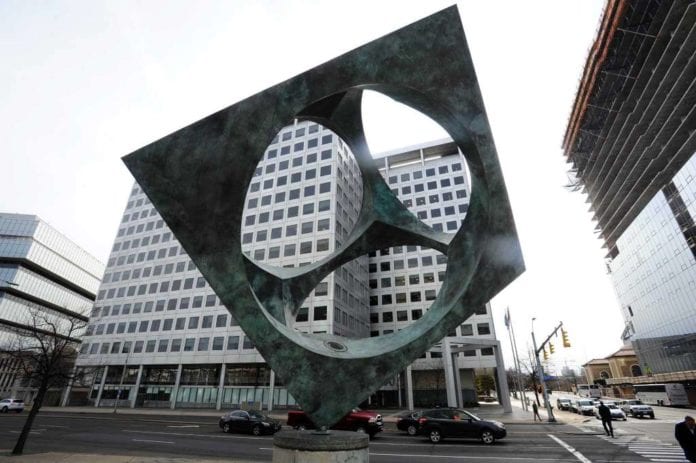UK smart-city firm Telensa has struck a deal with the city of Harrisburg, the state capital of Pennsylvania in the US, to trial traffic analytics, air quality monitoring, and smart waste sensor systems using its connected street lighting system.
Harrisburg deployed a Telensa smart street lighting system in 2016, and has taken the option to use the lighting network as a platform for additional smart city technologies. The light poles provide a power source and a secure cloud connection, and are located in densely populated areas, and yet out of reach of easy tampering.
The city is using sensors from UK-based CA Traffic for traffic analytics, Spain-based Libelium for air quality monitoring, and UK-based FarSite for waste monitoring.
The data from these sensors is being analysed and combined with existing lighting data, and displayed in a dashboard facility showing correlations between of the various data-sets. Telensa said this platform approach to data will provide the city with “smarter, more efficient, and joined-up” services.
At the same time, Harrisburg is advancing at last with street-lighting controls, installed as part of the 2016 deployment. It is to start adaptive street lighting on main roads, to dynamically adjust lighting levels in a central management system in response to real-time data received from radar-based sensors on-site.
Telensa said adaptive lighting affords energy savings of up to 30 per cent, on top of the standard 50 per cent savings from switching to LED lights. It has said in these pages, before, smart lighting delivers a 70-75 per cent reduction in energy costs, in total, with 50 per cent achieved by switching to LEDs and 20-25 per cent eked-out with lighting controls. Payback is pegged at around five years.
In Harrisburg, Telensa said its deployment in 2016 of 4,000 connected streetlights has seen the city’s utility bills fall by as much as 60-70 per cent.
Mayor Eric Papenfuse said: “Use of smart technology to collect data could have profound benefits for the city. I look forward to seeing the results of this important test of smart sensors using the lighting network, and hope we can see significant savings and benefits.”
Wayne Martin, Harrisburg’s city engineer, commented: “We live in a data-driven world, but we’re not going to monitor stuff just to monitor it – it has to make sense to the city. That’s why we have chosen these smart city applications to open up endless possibilities for us to improve city efficiency and save money – the dollars can really add up.”
Telensa PLANet’s street-lighting system comprises wireless nodes connecting individual lights, a dedicated network owned by the city, and a central management application. The systems pays for itself in reduced energy and maintenance costs, Telensa maintains. Around 1.7 million street lights use the Telensa system, in total, it reckons.
Will Gibson, founder and chief commercial officer at Telensa, said: “We’re thrilled to be collaborating again and deepening our relationship with the City of Harrisburg to utilise the connected streetlight infrastructure by adding smart city applications that bring more value to the city.”
Earlier this week, ABI Research predicted annual revenue from smart street lights will grow at compound annual rate of 31 per cent to reach $1.7 billion in 2026.
Also this week, Juniper Research said street lighting upgrades will deliver $15 billion in cumulative energy savings for cities in the period to 2023. These savings will be achieved both by converting lamps to energy-efficient LEDs and by adding connectivity to monitor and control individual lights.
It said the rise of smart-city platforms are enabling street lighting to act as a “hub point” for additional smart city services, such as public safety and smart transport. Siemens is the best in the business for platform provision, it said, ranking its MindSphere platform as the premier smart-city system, ahead of equivalent offers from rivals like Oracle, IBM, Huawei, and Itron

